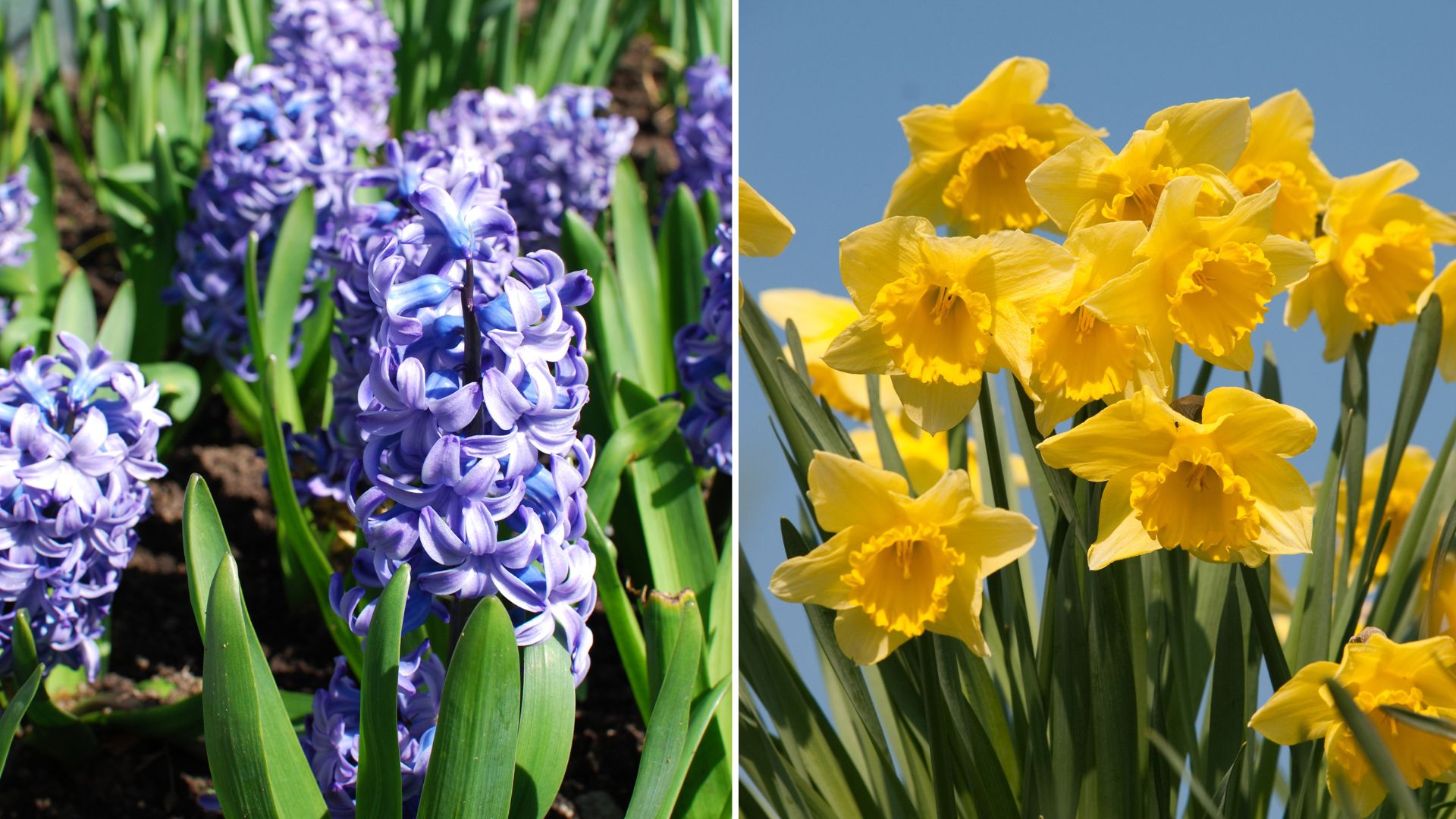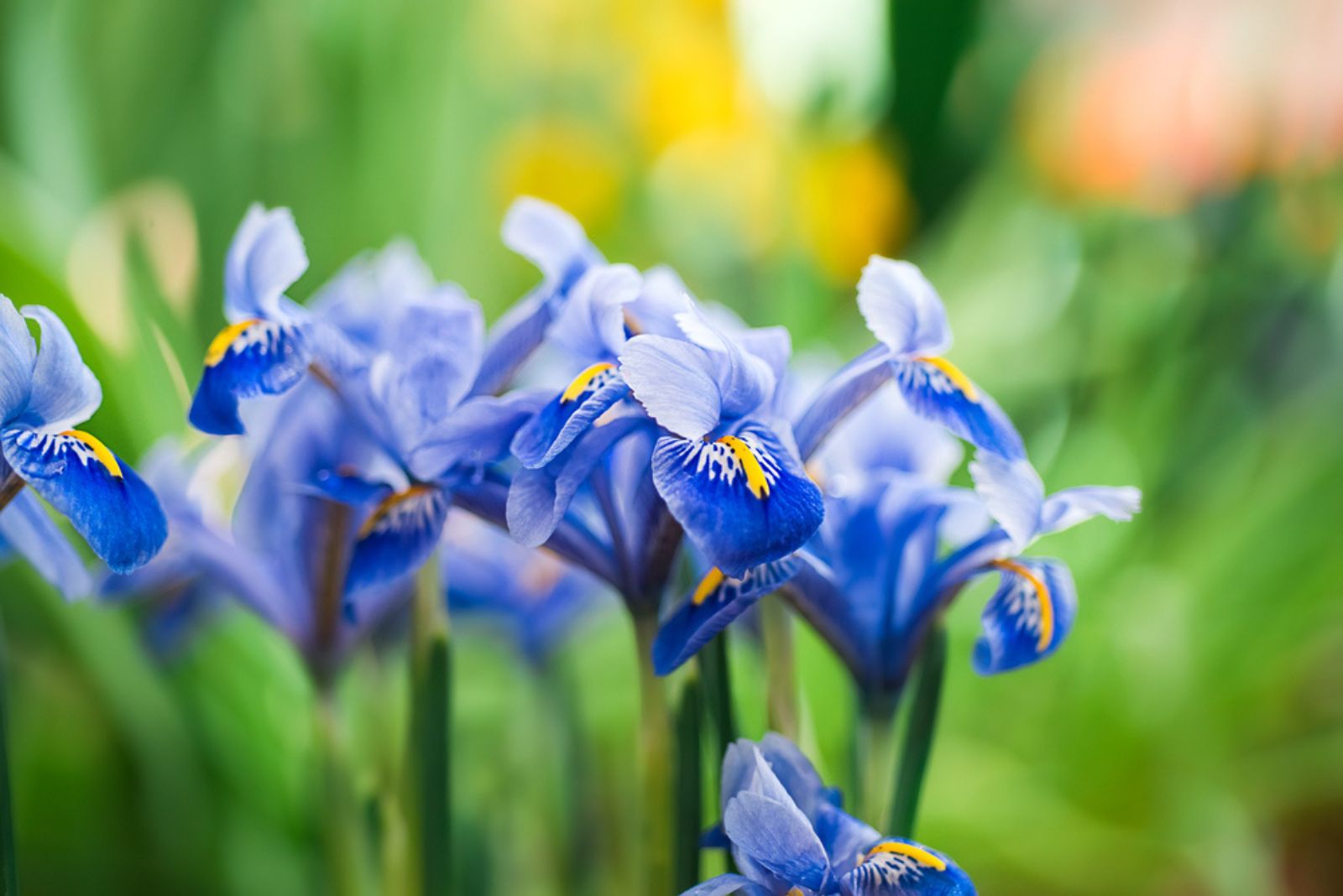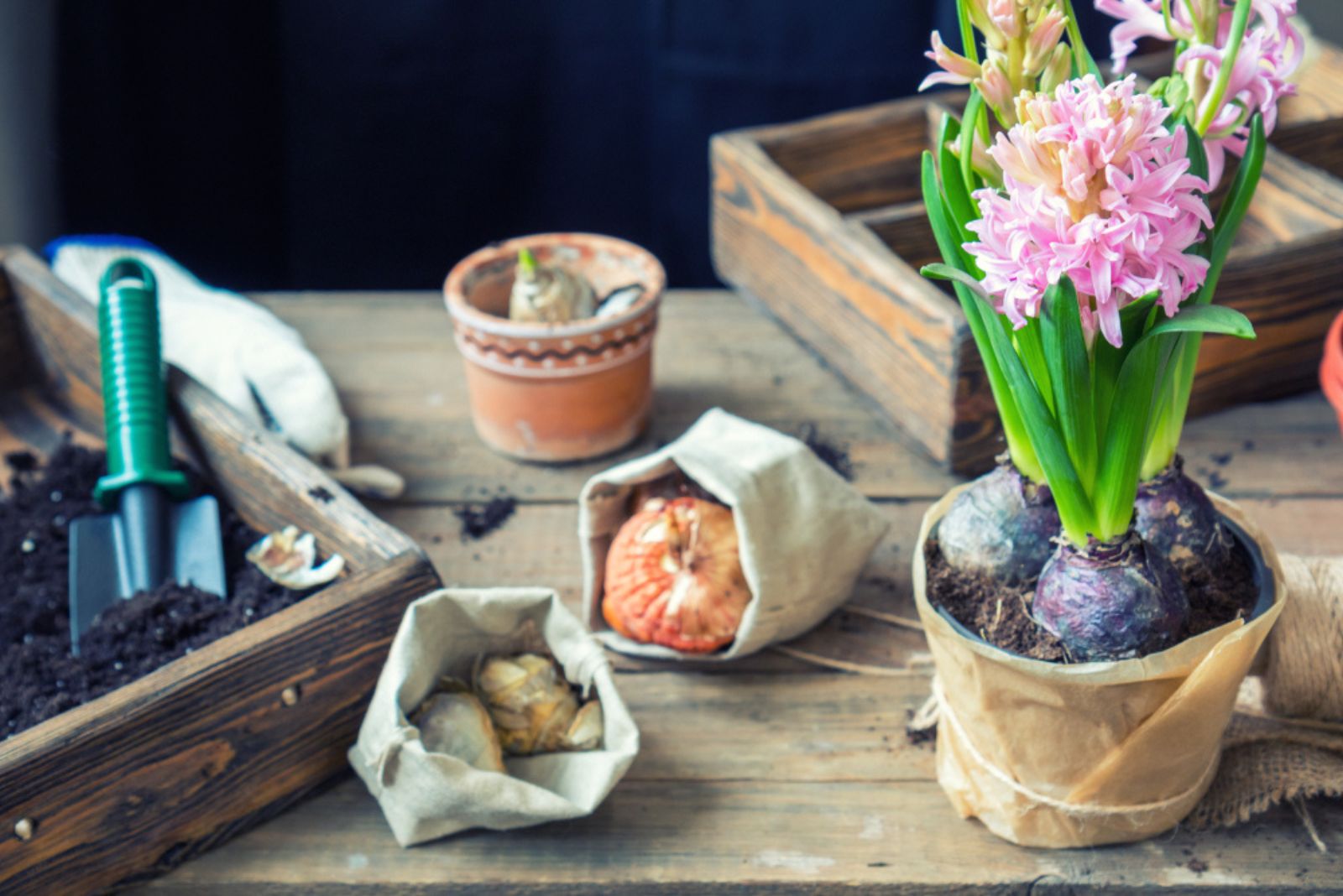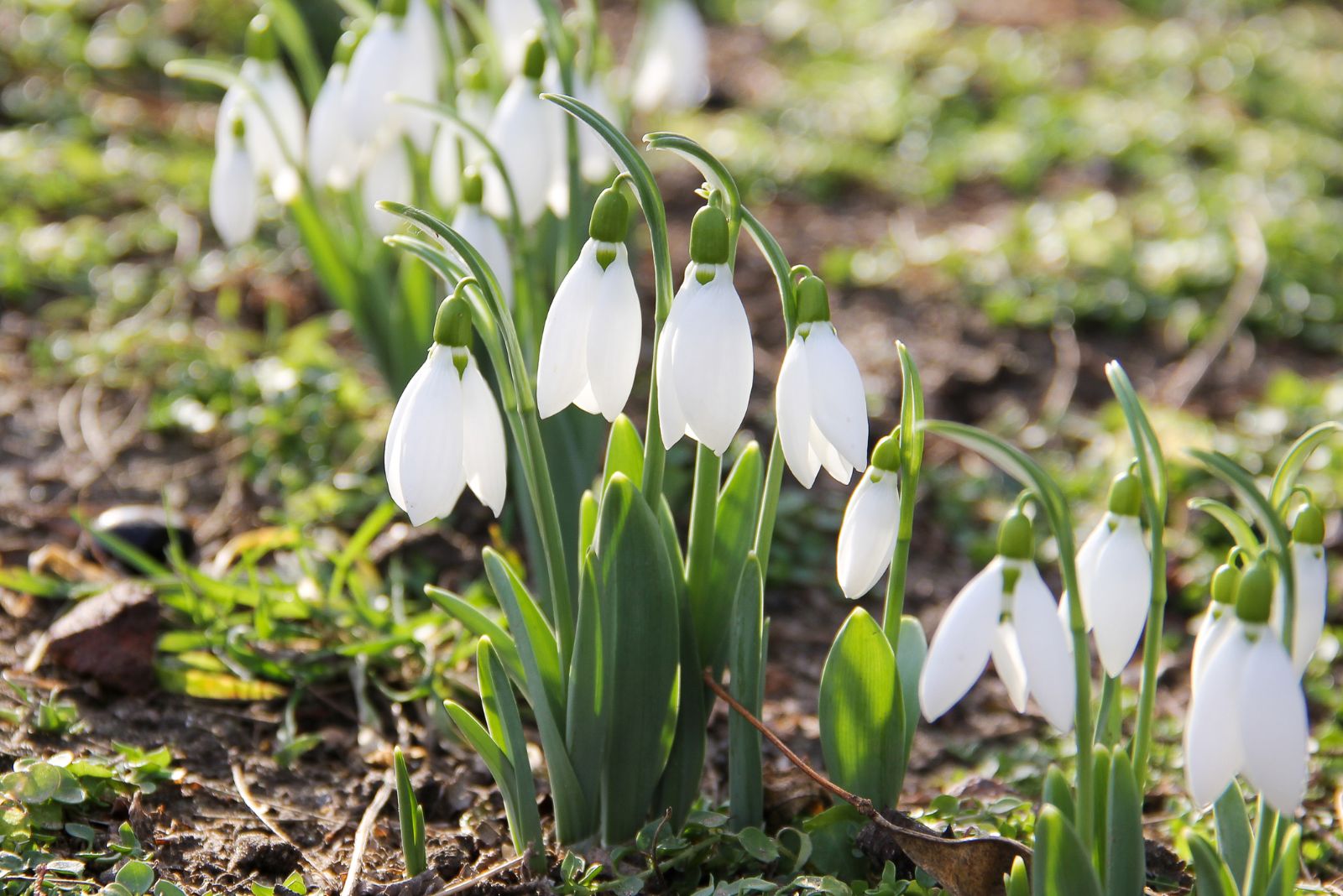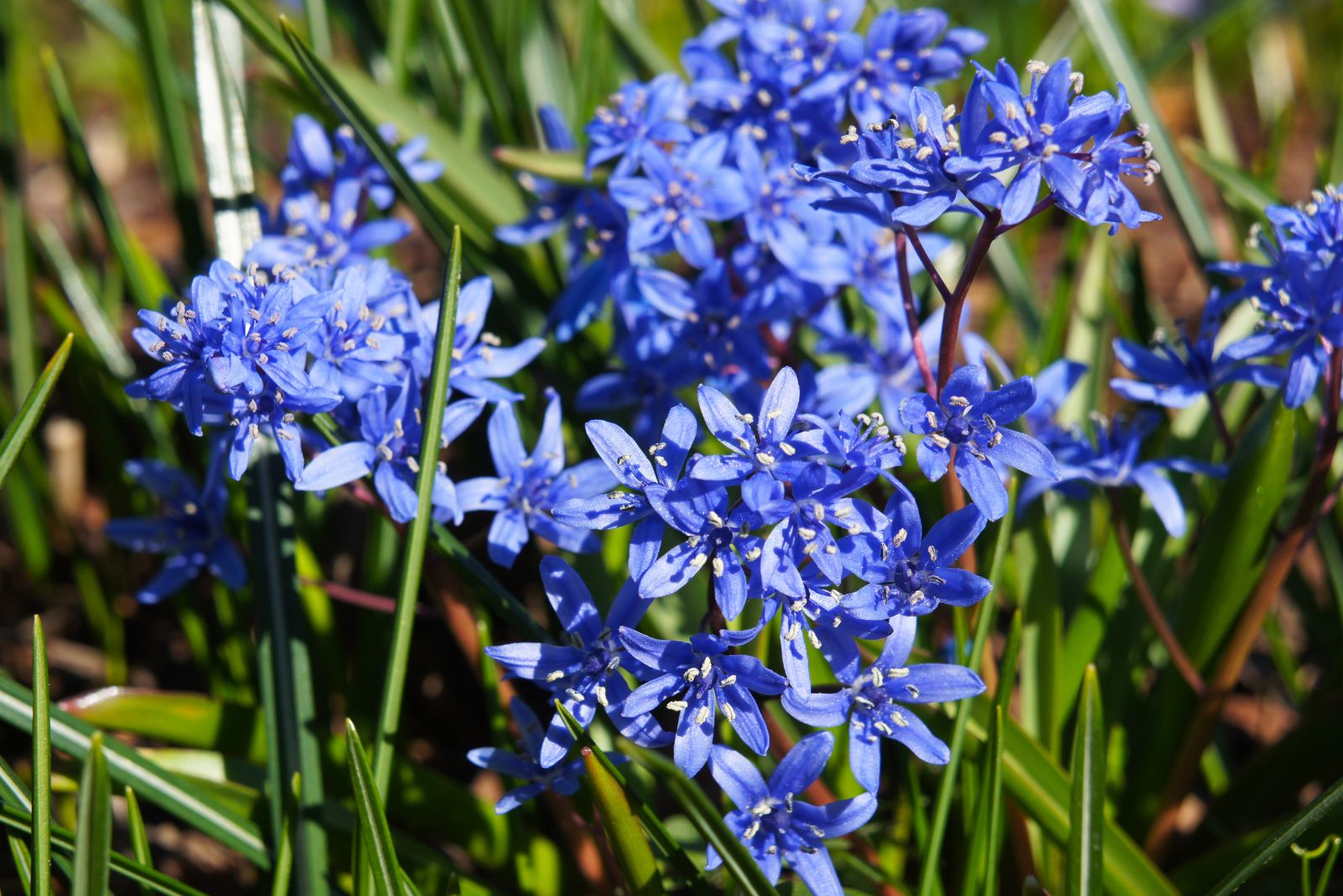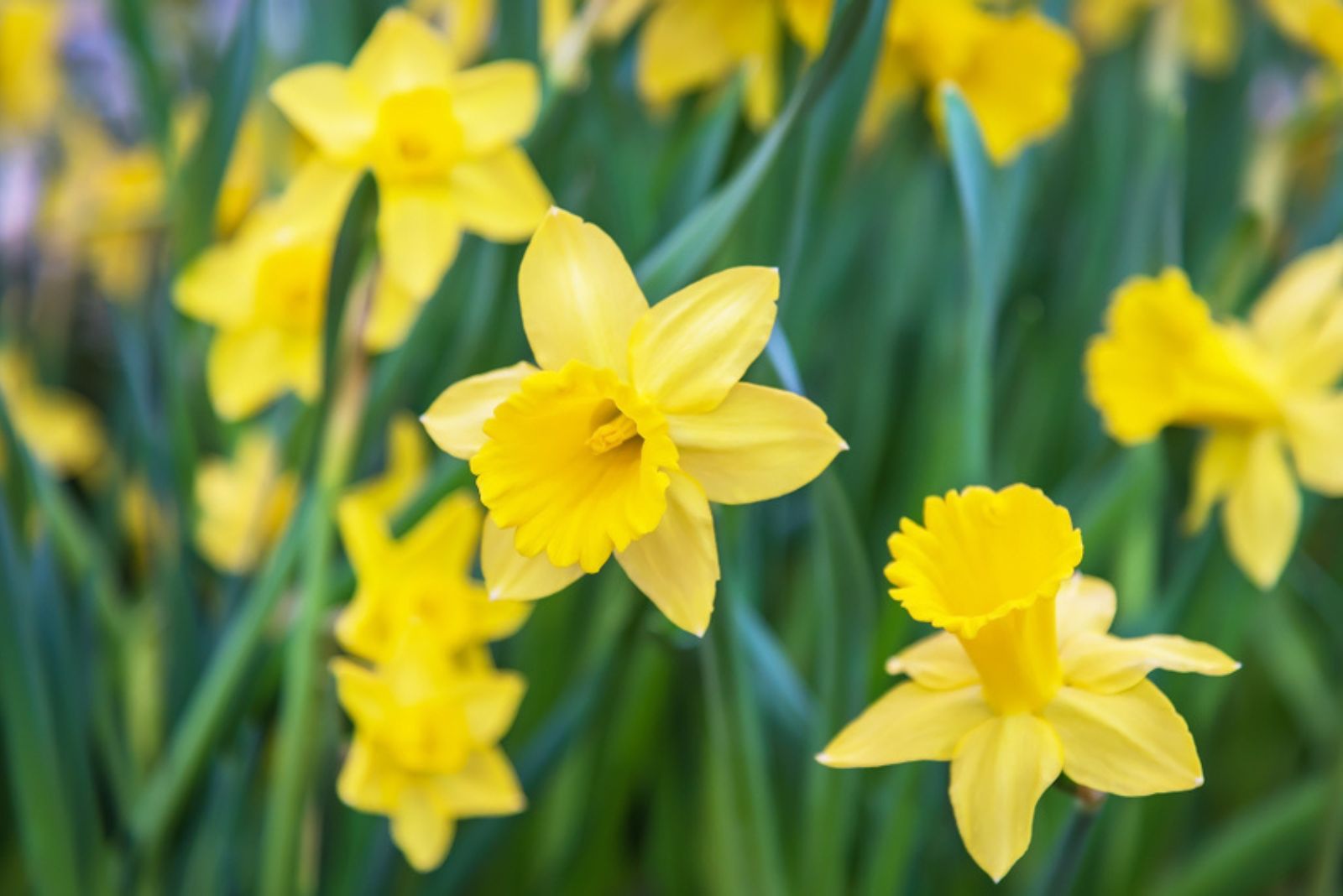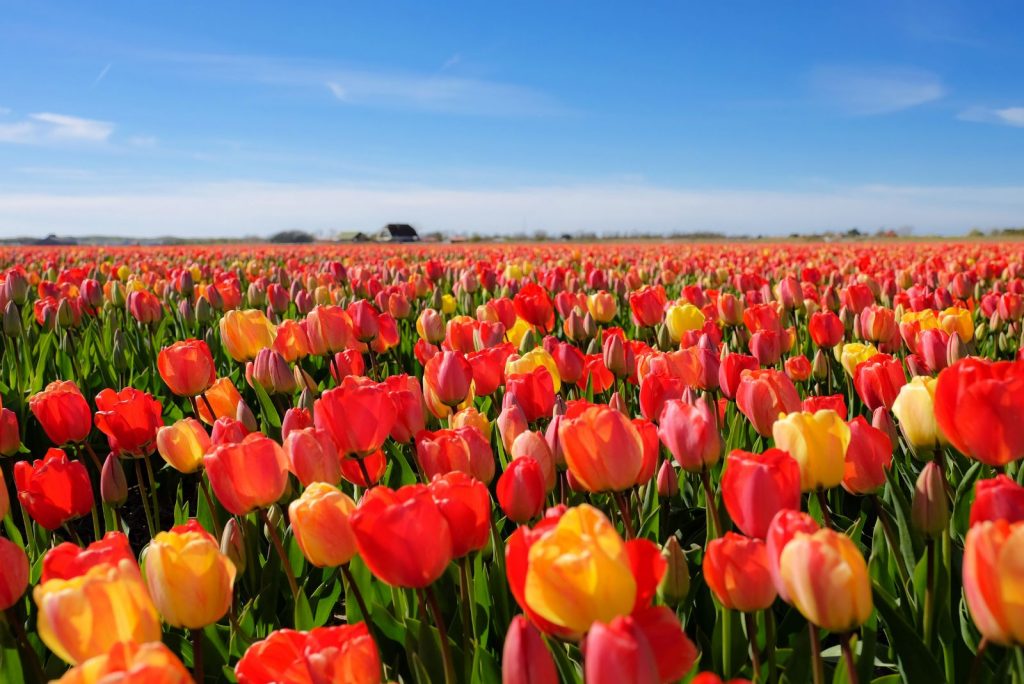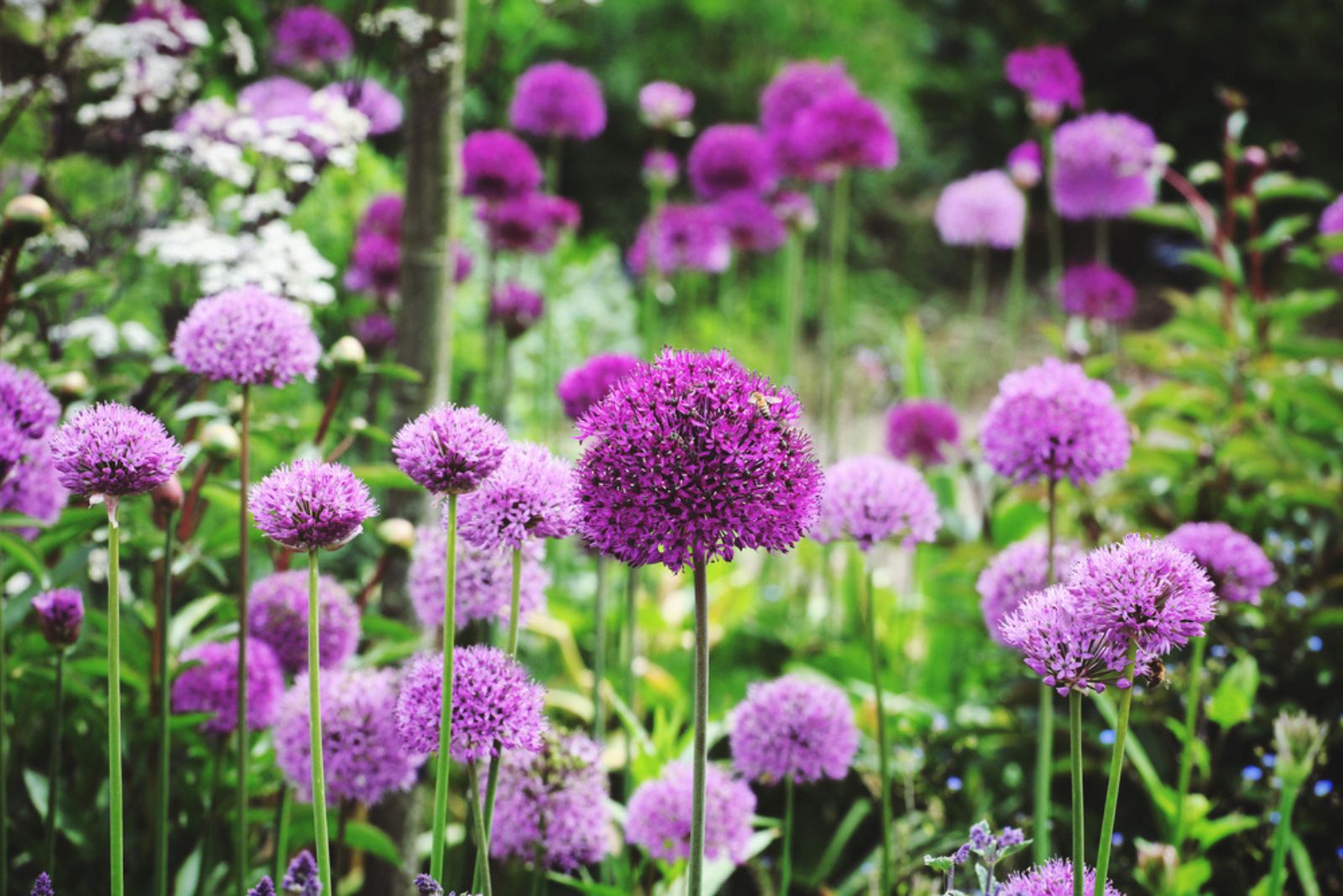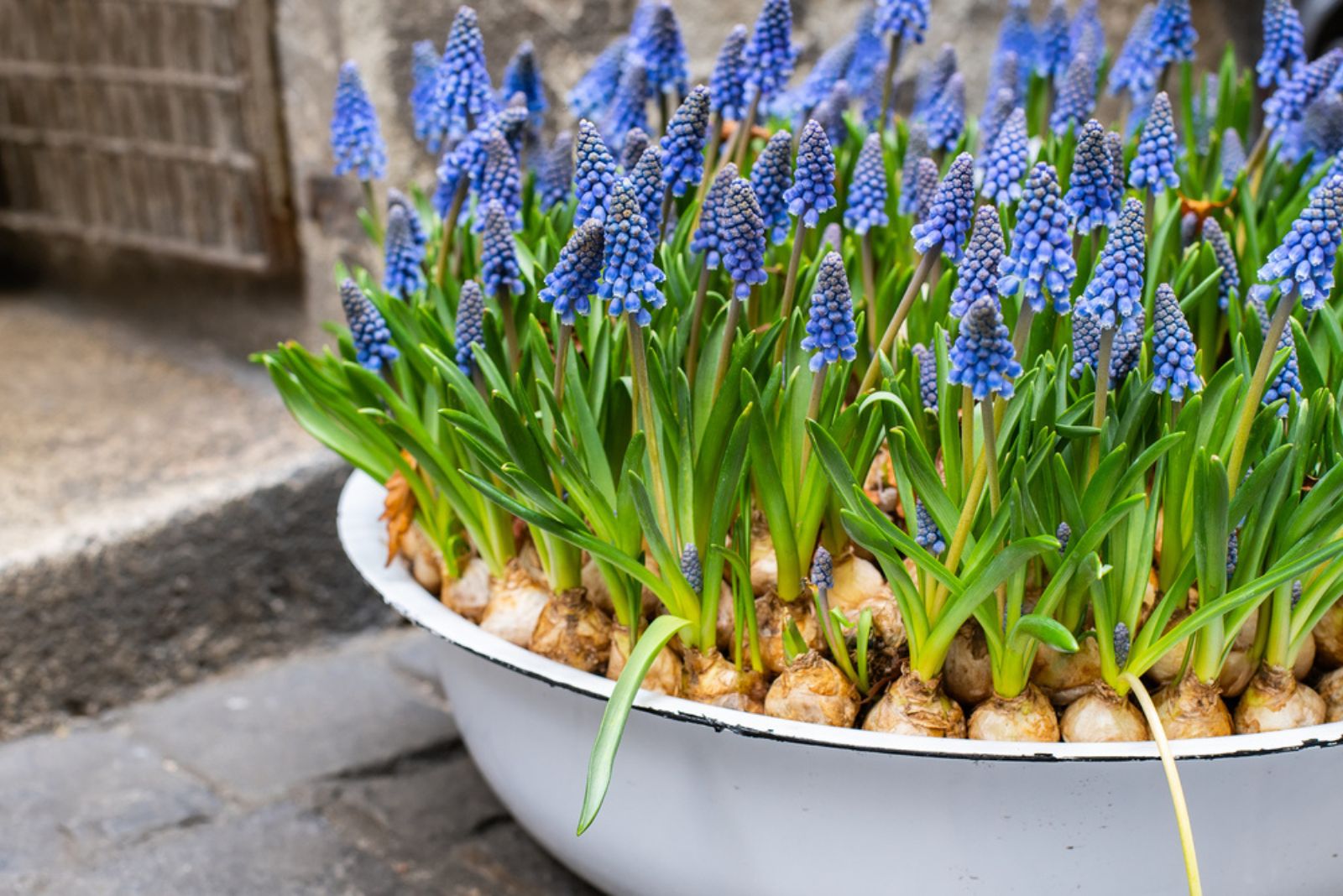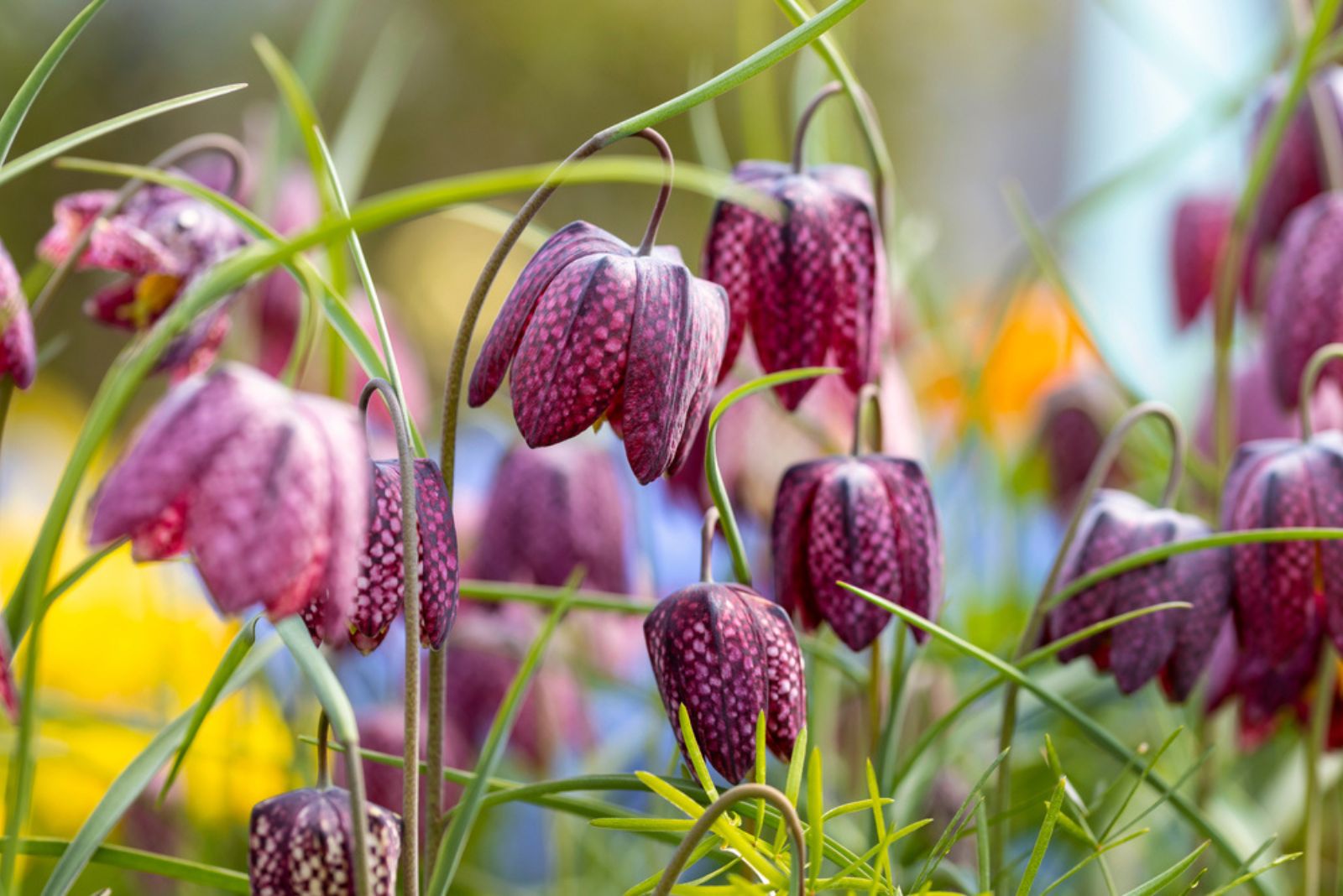Everyone thinks of the fall as the time of the year when gardening activities stop. Technically, the season for many plants has finished but you can do a lot to prepare your garden for the next year.
If you want your garden display to look breathtaking as soon as the spring arrives, there are some plants you can start in the fall and they’ll wake up when the ground warms up.
Let’s see the 10 best spring bulbs to plant in fall that will add a splash of color to your garden when the season starts!
1. Iris
September or October is the perfect time to plant iris bulbs that will bloom early in the spring. These old-fashioned flowers have a long blooming season and are always an excellent choice for spring gardens.
Some varieties are referred to as winter-flowering irises and you can see their magnificent blossoms in February or March; one of the best examples is the dwarf iris reticulata.
Dutch or Siberian varieties typically bloom in mid-spring.
When planting iris bulbs, make sure to put them at a depth of about 6 inches. If you decide on dwarf varieties, it would be best to plant them in pots because their tiny bulbs can be layered with other spring bulbs.
2. Hyacinths
Gardeners adore hyacinths for their splendid scented blooms that appear in mid-spring. Colorful blossoms emerge on the 10-inch tall flowering stalks that develop from bulbs.
These plants have a compact shape, making them perfect for any garden design.
The best time to plant hyacinths is anywhere between September and November. You should plant these species in groups at a depth of approximately 6 inches, making sure the flat root end faces downwards.
You’ll also need to ensure about 4 inches of space between each hyacinth bulb.
I should remind you that the bulbs of these plants can irritate your skin, so it would be best to wear gloves when handling them.
You can also plant your hyacinths in containers but in this case, I recommend you plant them tightly for a better display.
3. Snowdrops
Your garden will look fantastic in the early spring if you plant snowdrops in the fall. The small bell-shaped white blossoms of snowdrops are the first sign of spring.
You can choose from a wide range of varieties and no matter which one you decide on, plant them in October or November.
Snowdrops can either be grown from bulbs or transplants bought in nurseries. If you decide on bulbs, make sure to plant them quickly since they easily dry up.
These magnificent plants do well in moist but free-draining soil types. They’re woodland plants so they’ll thrive in partially shaded spots in your garden.
You can plant your snowdrops in containers but be careful with soil moisture content because it dries out fast during hot summer days.
Don’t keep the transplants of your snowdrops in containers for more than 2 years. Simply replant them into the ground to encourage new growth and more blooms.
4. Leucojum
Many growers haven’t heard of leucojum plants and they often confuse them with snowdrops. They go under the name snowflakes and their flowering stalks are taller than those of snowdrops and they appear later in the spring.
Since they’re twice as big as snowdrops, leucojum plants are perfect for grassy parts of your garden.
You can plant your snowflakes from September to November. Bury the bulbs approximately 6 inches deep in nutrient-rich and free-draining soil.
5. Scilla
If you would like to see a deep blue color in your spring garden, scilla plants will do the job. These plants produce blossoms in early spring but only if you plant them in September or October.
Scilla plants look best when planted densely and their blooms poke through the short grass.
You should find a spot in your garden that receives full sun or partial shade and plant the bulbs approximately 3-4 inches deep. This is pretty shallow when you compare it with other bulbs but it allows you to plant more bulbs in an area.
Scilla do well in pots or when planted as the top layer of a lasagna planting scheme.
6. Daffodils
September and October are perfect months for planting daffodils. These famous plants generate blossoms from February through May.
The best thing about daffodils is that there are many varieties to choose from. They differ in color, size, and shape so there’s at least one variety for every garden design.
You can also mix varieties so that you have a wonderful garden display from early to mid-spring.
When planting your daffodil bulbs, make sure that the depth of the hole is about three times the height of the plant’s bulb.
These plants are reliable bloomers and look amazing when planted in groups, but they also do well in containers.
7. Tulips
Here comes the most popular spring flower, tulips. When planted in October or November, tulips will produce their splendid blossoms as soon as spring arrives.
However, the blooming season may depend on the type of tulip, so make sure to check it before planting.
Similarly to daffodils, you need to plant tulip bulbs at a depth of three times the height of the bulb. Additionally, pay attention to ensure about 4 inches of space between each tulip bulb.
Although these plants can be grown as perennials, gardeners typically grow them as annuals because the chances of abundant blooming are higher.
8. Alliums
The pom pom flower heads of allium plants make a perfect addition to any garden. If you want to see these blossoms in late spring then you should plant them in September through November.
You can find alliums in different sizes ranging from 8 inches up to 45 inches. If you have larger varieties, you should plant them about 6 inches deep.
Interestingly, many people believe that these plants come in purple only, but you can find blossoms in white and various shades of yellow, pink, and blue.
These plants look amazing in flower beds and they make perfect focal points.
9. Muscari
Otherwise known as grape hyacinths, Muscari plants are bulbs renowned for their splendid bright blue blossoms.
The scented blooms appear on 6 inch-tall stalks and they are true magnets for bees.
Plant Muscari bulbs in September or November at a depth of about 4 inches. You can add them in front of garden borders, in shady spots where most plants don’t bloom, and you can even plant them in containers.
These are perennial plants, which means they’ll come back year after year but they do have a tendency to spread so you should divide them every couple of years.
10. Fritillaria
The last spring bulb on our list is fritillaria and this plant is known for its gorgeous bell-shaped blossoms that hang from a straight but narrow stalk.
What makes fritillaria plants special are the checkered pink or purple patterns found on the blossoms.
You should plant them in September or October in moist soil with good drainage. These plants aren’t fussy over light conditions and they’ll thrive in both full sun and partial shade.
Growing spring bulbs is a perfect way to add color to your garden when the long winter ends. Now that you know which ones perform best when planted in the fall, grab your gardening gloves and close this season the best way possible!

